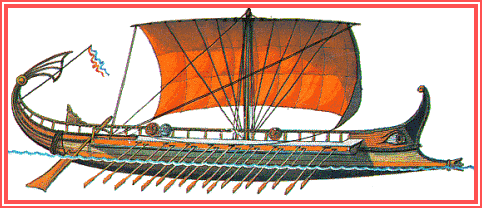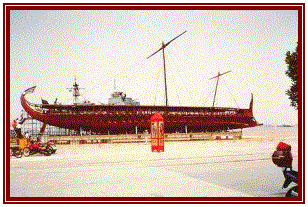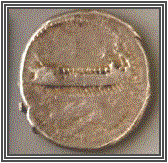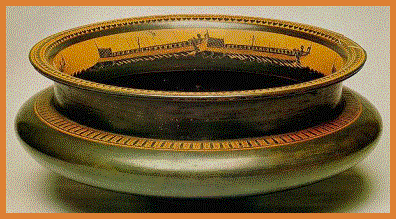|

Ancient Ships: The Ships of Antiquity
War Ships of the Greeks

Greek Brireme from the period of the Trojan War 1250 BCE
 |
Model of Greek Bireme
of the Trojan War 1250 B.C. from Hobby World Of Montreal |
The Trojan War
Legend has it, that for ten
long years the Greeks laid siege to the ancient city of Troy but
could not take it. Then one night they sailed away leaving
only a large Wooden Horse. Thinking that the Greeks had given
up and returned home the Trojans took what they thought was a large
idol into the city as war booty. That night ten brave men crawled
out of the belly of the horse. They opened the gates of the city
allowing the returning Greek soldiers to pour in and defeat the
mighty city of Troy.
The Bireme was the warship used at the time of
the Trojan wars. It had a broad bottom with a shallow draft. Biremes
were propelled by two banks of oars and virtually skimmed over the
seas. The bow had a portion that protruded out at water level. It
is thought that this configuration was intended for ramming and
piercing the enemy's ships hull.
This earlier configuration is close to the structure
of the boats used by the Greeks to defeat the Persian fleet at Salamis
in 480 BCE. It is clear from ancient Iconography that the evolution
and changes to the configuration of these ships evolved over an
extended period of time. The time between the Trojan and Persian
wars being approximately 800 years.
 |
Greek Bireme circa 500BCE
|
An important version of an ancient warship was
the "bireme" equipped with an outrigger. The advantage
was, that this way, a ship could have two rows of oars on each side.
The upper row of oars-men was sitting on an upper bench more outside,
so their oars wouldn't interfere with the oars of their fellow mates
sitting below. A "bireme" could be equipped with as many
as a hundred oars-men, fifty on each side of the ship.

A Greek Ship Trireme full scale
reconstruction circa 400-BCE in Dry Dock
The next step in the evolution of Greek war ships
was the creation of the "trireme" with three rows of oars-men
on each side of the ship (seethe modern recreation above). The "trireme"
was the standard warship of most Greek city-states. While a "trireme"
still had a quite narrow hull, the outrigger had to be wider than
on a "bireme". Most Greek "triremes" had a partial
fighting-deck, while the later Roman
version of this warship-type, had a full deck. The ship shown is
a recreation made by the Trireme Trust.

Trireme Model
The ultimate test of these ships came for the Greeks during the
Persian Wars at the battle of Salamis against the Persian Fleet. See
the Battle of Salamis. The victory of the Greeks in this battle
paved the way for the flowering of the Greek culture during the
next fifty years.
 |
|
This vase is a stunning example
of where iconography tells us as much or more than words, the
illustration on the Dinos shows a fleet of war ships underway
on an ocean voyage. For anyone that has been at sea the imagination
is all you need to be there with the crew of the ship . The art
represents a moment with the Greek navy frozen in time. This art
is a stunning window to the past. Artistically this black-figure
dinos is notable for its austere decoration. The shining black
lacquer and the ornament around the neck emphasizes the chiseled
form of the vessel. On the inner surface of the neck are five
oar ed ships plowing through the rough sea. The artist carefully
depicted the silhouettes of the ships, the prows in the form of
dolphins' heads, and swans' heads on the stern, sail, rope and
oars. In depicting the crew the artist paid particular attention
only to the helmsmen, while the heads of oarsmen are represented
as black circles, which can be easily taken for mere ornament.
A Greek Warship of Trireme Class
Shown in the picture is Olympias
, a reconstruction of an Athenian Trireme of the 5th and 4th centuries
BC, built in Greece to a design worked out by John Coates, a naval
architect, taking into consideration ancient evidence researched
by John Morrison, former President of Wolfson College, Cambridge.
Olympias was commissioned into the Hellenic Navy in 1987.
The trireme had three banks of rowers
and sail to power the ship. this design came into use in the sixth
century BCE.
|



